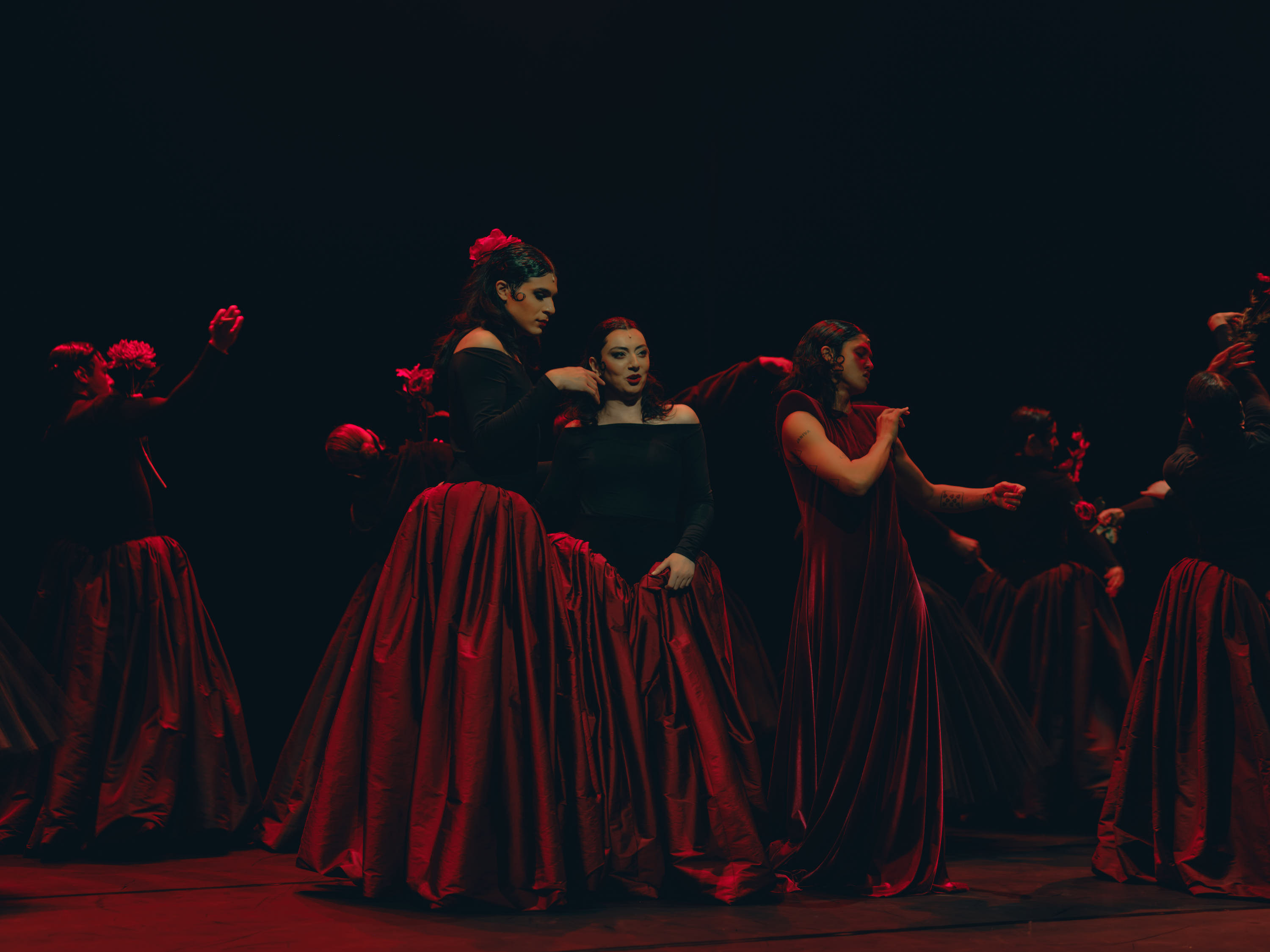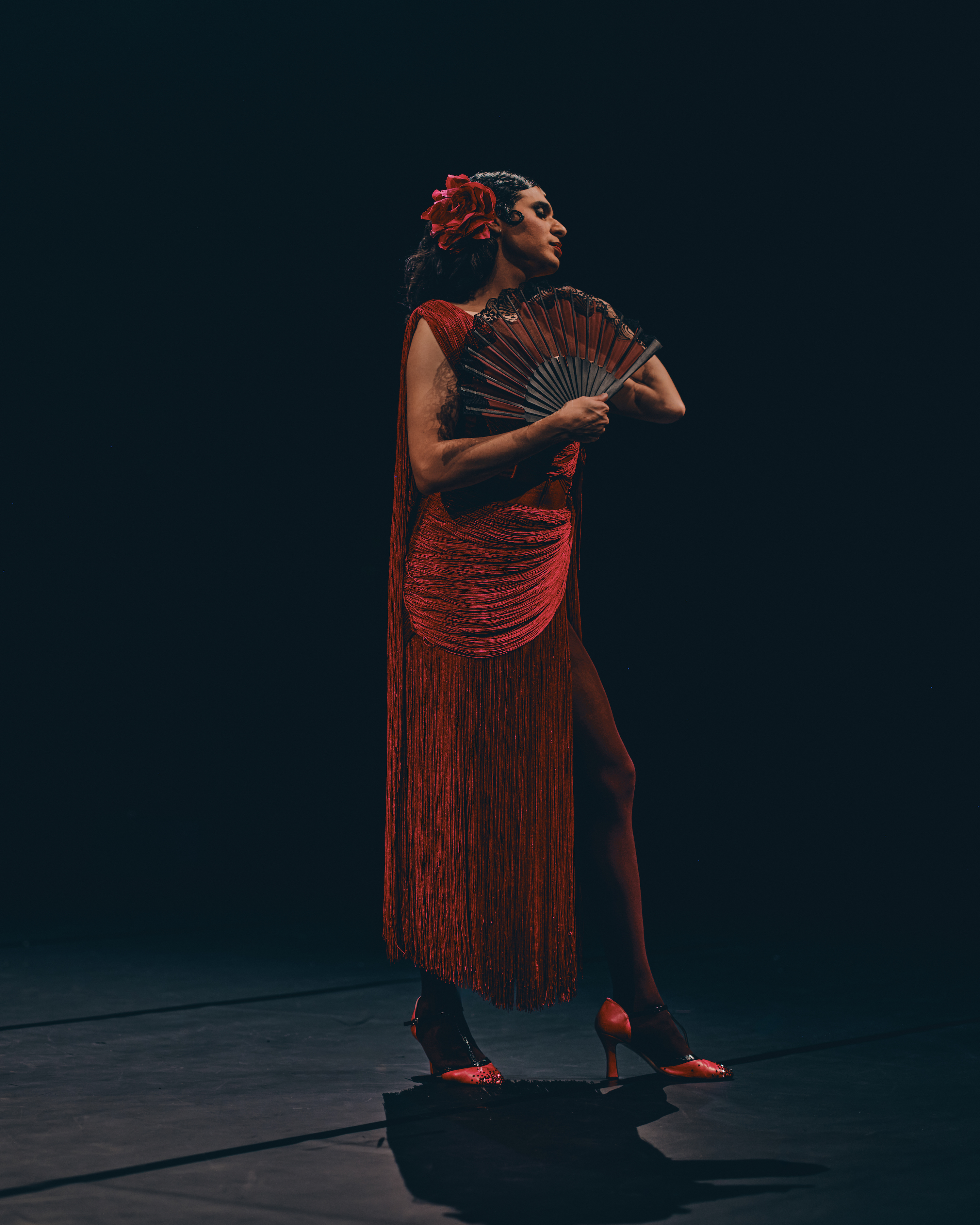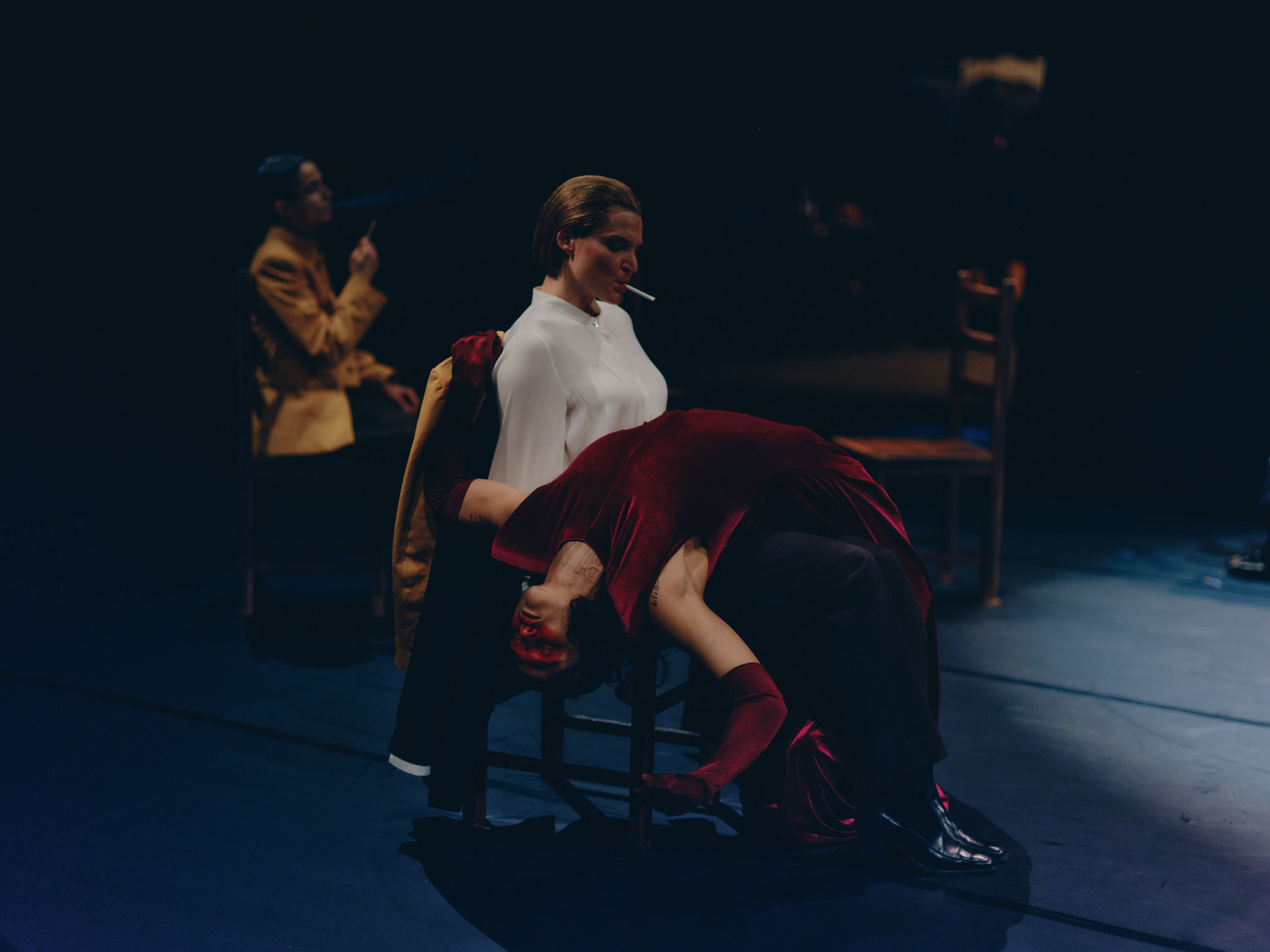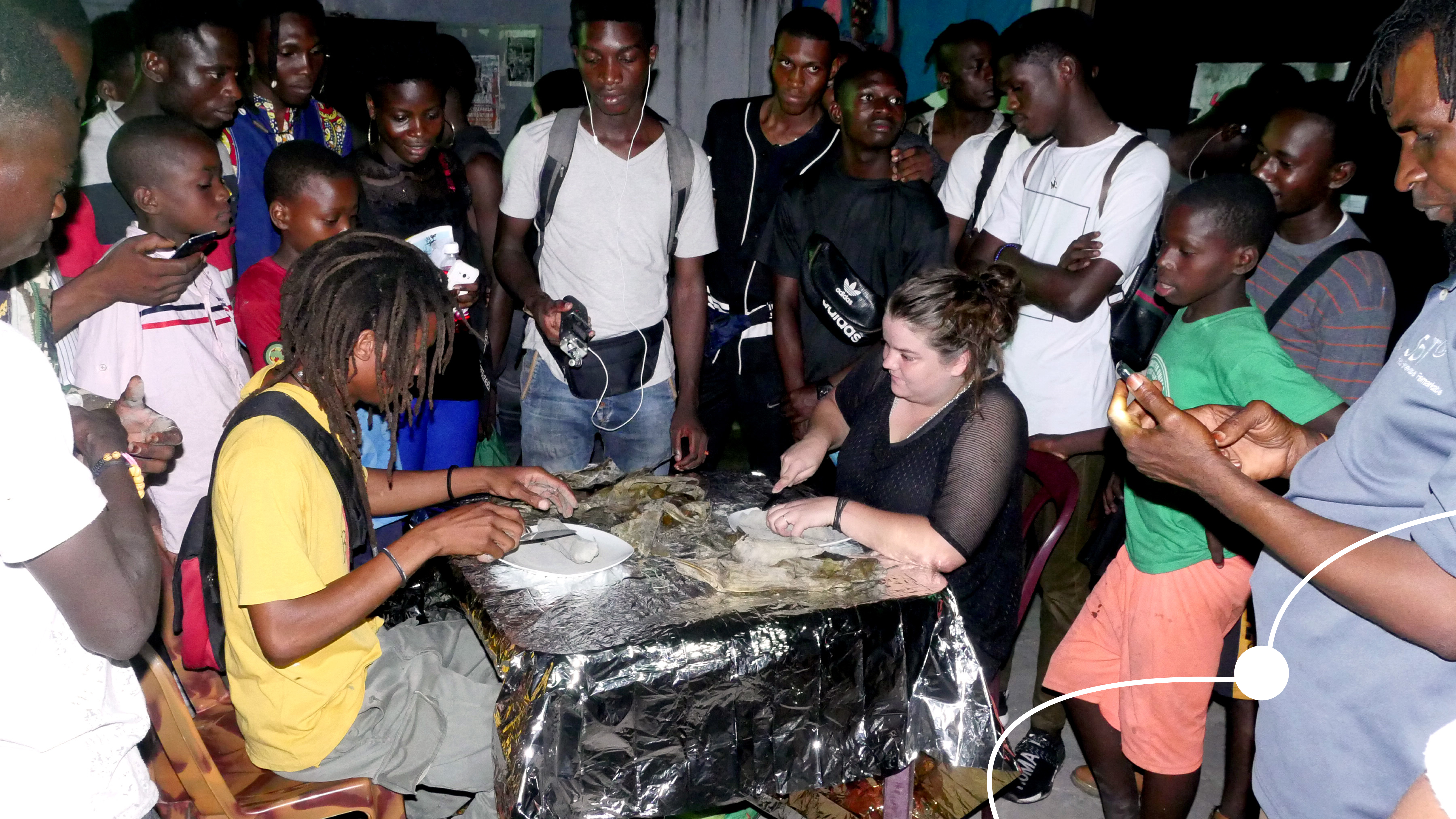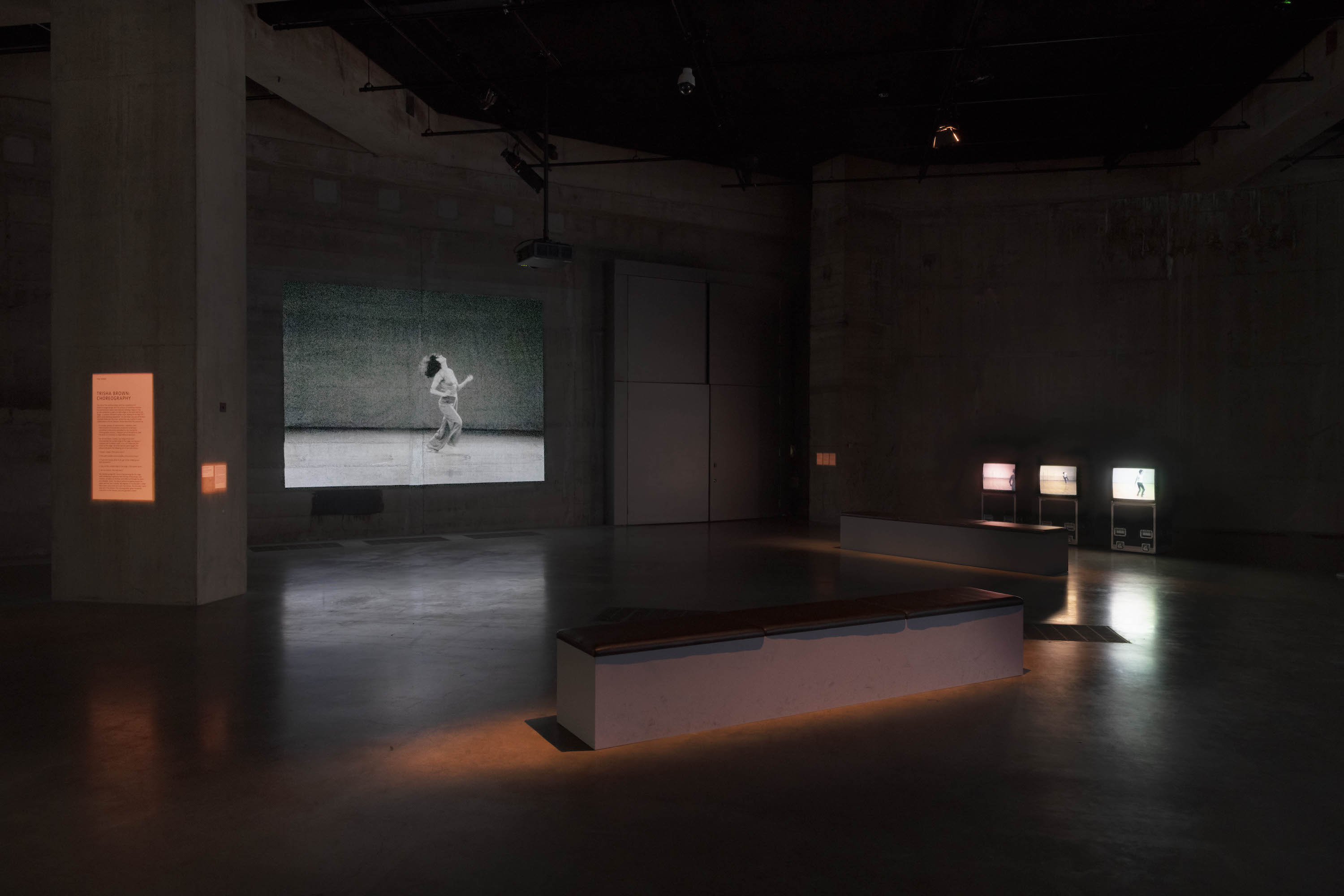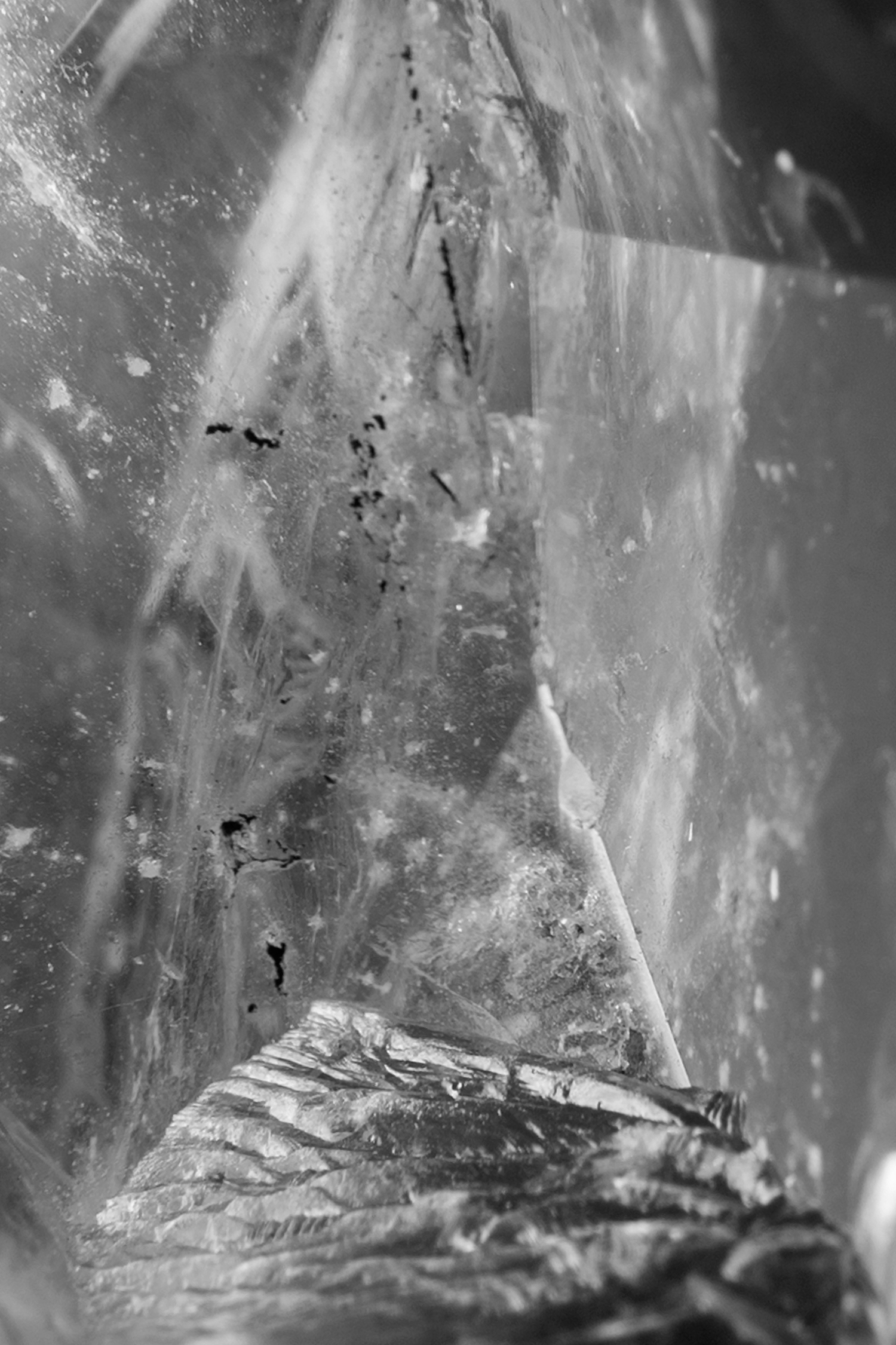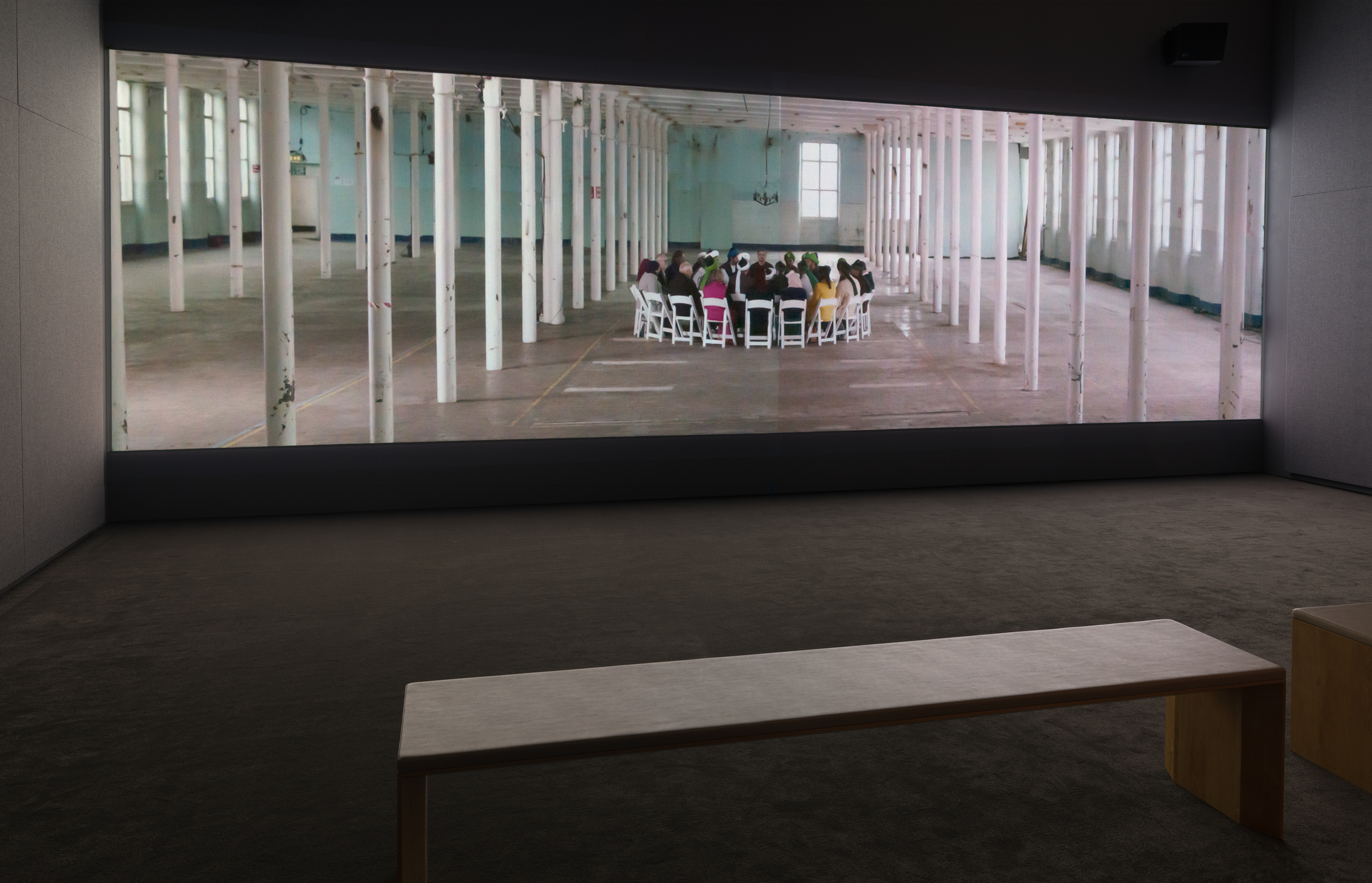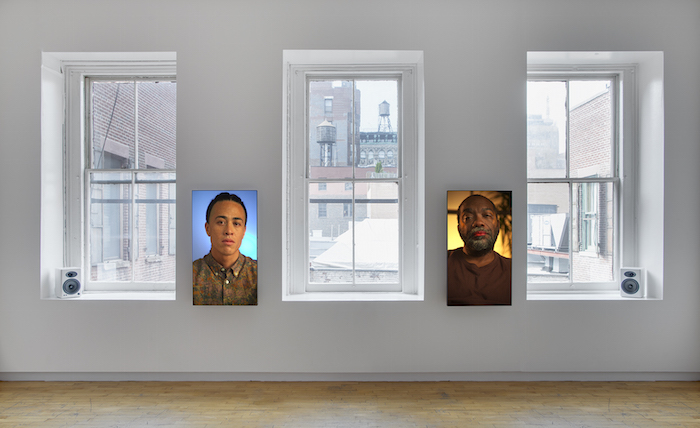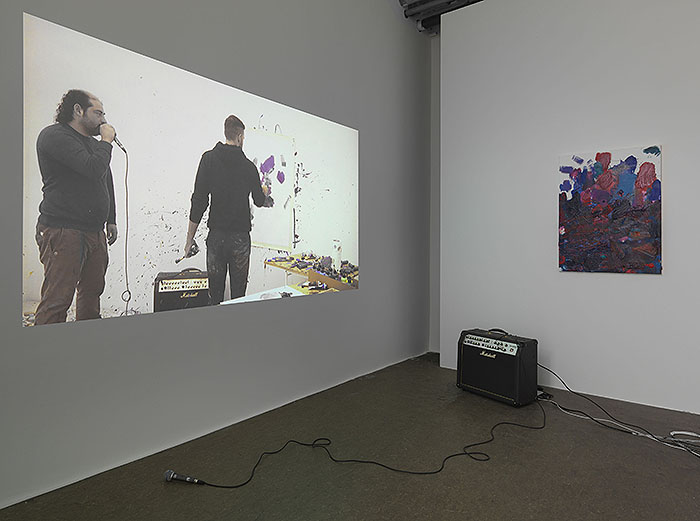Royal Theater Carré, Amsterdam
June 23, 2024
Discussing her mode of collaboration, Wu Tsang has remarked that “I always feel the collaboration mandate is: if you’re going to do this, you have to fuck it up. You can’t do it respectfully, you have to almost disrespect it. You have to take it, change it, transform it, make it yours. Do to it what it does to you.”1 Strange then that Tsang and her collaborative band Moved by the Motion’s version of—intervention into, exploration through—Georges Bizet’s 1875 opera Carmen at the Royal Theatre Carré is so respectful at every level; benign, in fact, to the point of offensive.
There are two narrative lines: Bizet’s operatic rendering of the tragic story of the passionate Roma cigarette factory worker Carmen murdered by a former lover, the soldier Don José, after leaving him for a toreador is the first. The second follows a single-minded forensic archaeologist, played by Perle Palombe, in her attempt to have a Spanish Civil War grave opened. In this grave is said to be the body of the Red Paloma, a flamenco singer forced to perform in front of Franco before being executed. The archaeologist’s attempts are thwarted by a senior figure in the institution where she works who by turns wants either to monetize the dig via the heritage industry or refuse to fund it due to the potential political repercussions and upset caused to donors with historical links to Franco’s ultraconservative regime. The two elements circle each other throughout the performance until a final act in which Carmen and Paloma become one, the point being that violence against women and minorities is transhistorical and ongoing.
Wu Tsang is interested in what she calls “resistant social life,” and has said she’s attracted to stories with “messy politics.”2 She is often concerned with territoriality, the spaces in between; she shares with her friend and sometime “band” member Fred Moten a concern with blurring, hinterlands, and interstitial spaces both literal and figurative. Past work has explored the social and gestural codes of sailors in a reworking of themes and motifs from Herman Melville’s Moby Dick (1851). And here the theme of flamenco is one with potential. There is a significant and fascinating literature on the links between flamenco and the Black musics of North America and Cuba. To take one instance, the poet Nathaniel Mackey, an influence on and interlocutor with Moten, wrote an essay in 1993 called “Cante Moro” (Moorish Singing) which invokes the Moorish origins of flamenco: as Mackey writes, it “acknowledges the hybrid, heterogeneous roots not only of cante jondo but of Spanish culture generally, of, in fact, culture, collective poesis, generally.” “Gypsies,” observes Mackey, “embody a mobile, mercurial non-investment in the status quo.” For a peripatetic artist and her band with their interest in “messy” politics, gender fugitivity, and the exclusion and brutality of histories written by the victors, this should be productive material.
There is scope, then, to critically explore or intervene into Bizet’s co-opting of flamenco forms and his exoticization of subaltern modes of social life for the pleasure and titillation of the Parisian bourgeoisie, but it doesn’t happen. Doesn’t happen at the level of the text or music, which outside of Bizet’s score is a kind of banal version of New York minimalism. Instead, a broad theme concerning the fate of a minority that claims its freedom and right to express itself and to love in whatever way it desires is painted in the broadest brushstrokes. And it doesn’t happen in terms of context either.
Walter Benjamin’s old zinger that there is no document of culture that is not at the same time a document of barbarism might be projected in neon behind the stage here. Benjamin wrote of the necessity of detonating the past in the present, and of course in a quite straightforward way that’s what is being staged here. As the archaeologist asks, “how many secrets about the last century are we hiding?” But there is an unconscious level at which this is happening that is perhaps more telling. For what realm of art making are we moving in here? What mode of production is operative? Wu Tsang has been in residence at Zürich’s Schauspielhaus for several years. Her collaborators in Moved by the Motion include the musician and DJ Asma Maroof who often works in fashion—the collective produced a film for Louis Vuitton’s fall/winter 2021 men’s show—and the performance artist and choreographer Tosh Basco, who has also walked the more edgy catwalks. It’s a glamorous international set-up, touring the kunsthalle, runway shows, and high-end theaters of Europe and North America. Tsang and Moved by the Motion’s projects are large in scale and lavishly funded and she was awarded a MacArthur Fellowship, known colloquially as the “genius” award.3 We are on a certain tier of the art circuit, one that operates largely across the commercial gallery system—Tsang is represented by Bortolozzi in Berlin and Cabinet in London—the fashion industry, and within large-scale publicly and privately funded institutions.
It might seem unfair or facile to situate Tsang in this way, but here one longs for some kind of reflexivity, some kind of reflection on the conditions that make this work possible. One has to ask: what work is being displaced by this kind of project? How many less established artists could be funded? A new opera instead of this banal “intervention”? For the piece is banal; it doesn’t have any of the subversive energy of, say, Charles Ludlam’s rewriting of the operatic canon. Though of course the artistic ecologies within which someone like Ludlam operated have been destroyed by neoliberal homogenization. It is in registering the distance between that past and this present that the Benjaminian work resides.
The camp and queer history of opera’s reception is another great theme left by the wayside. Earnestness is mistaken for tragic intensity. Tosh Basco performs some painfully literal choreography: in case the audience don’t understand, her face is painted blood red. She represents the furies, tragic fate, historical trauma, duende. In his famous 1933 lecture "Theory and Play of the Duende," Federico García Lorca, a hovering spirit here (when Civil War graves are spoken of one can’t help recalling that his body has never been recovered), writes that duende is a “longing without object.” As Mackey observes, for Lorca duende is “a tearing of the voice, a crippling of the voice that paradoxically is also enabling.” Longing, duende, passion, the enabling crippling of the voice. Such resonant, consequential themes. How disappointing then that it is the soprano Katia Ledoux’s facility, her wonderful rendition of Carmen’s arias, that lingers. The source text overwhelms its interpreters.
Bizet’s opera scandalized its audience when it was first performed. Some audience members don’t return after the interval, not, one suspects, out of rage, more from disappointment and ennui. Tsang’s Carmen is so inoffensive, so lacking in passion or duende, that when the word “fuck” is spoken in the archaeologist’s final monologue I was almost shocked, not quite sure I’d heard right. “I demand a cigarette”, shouts one of the characters in act one. I know the feeling.
Wu Tsang’s film installation based on the story of Carmen debuts at MACBA, Barcelona on July 20.
Jade Barget, “Interview with Wu Tsang,” The White Review (June 2022), https://www.thewhitereview.org/feature/interview-with-wu-tsang/.
“Wu Tsang – interview | Madrid | 21 February 2023,” Studio International (May 4, 2023), https://www.youtube.com/watch?v=qf1cJTQWpbk.
For instance, her film Moby Dick had funding from the LUMA Foundation, Superblue, TBA21—Academy, Hartwig Art Foundation, The Shed, De Singel and the Whitney.
